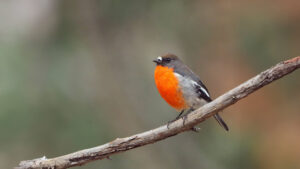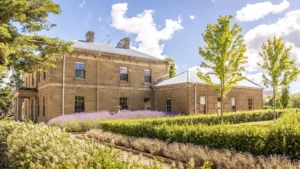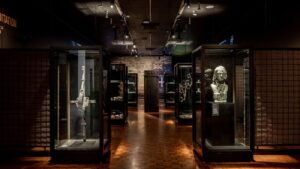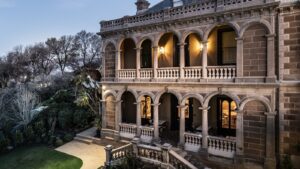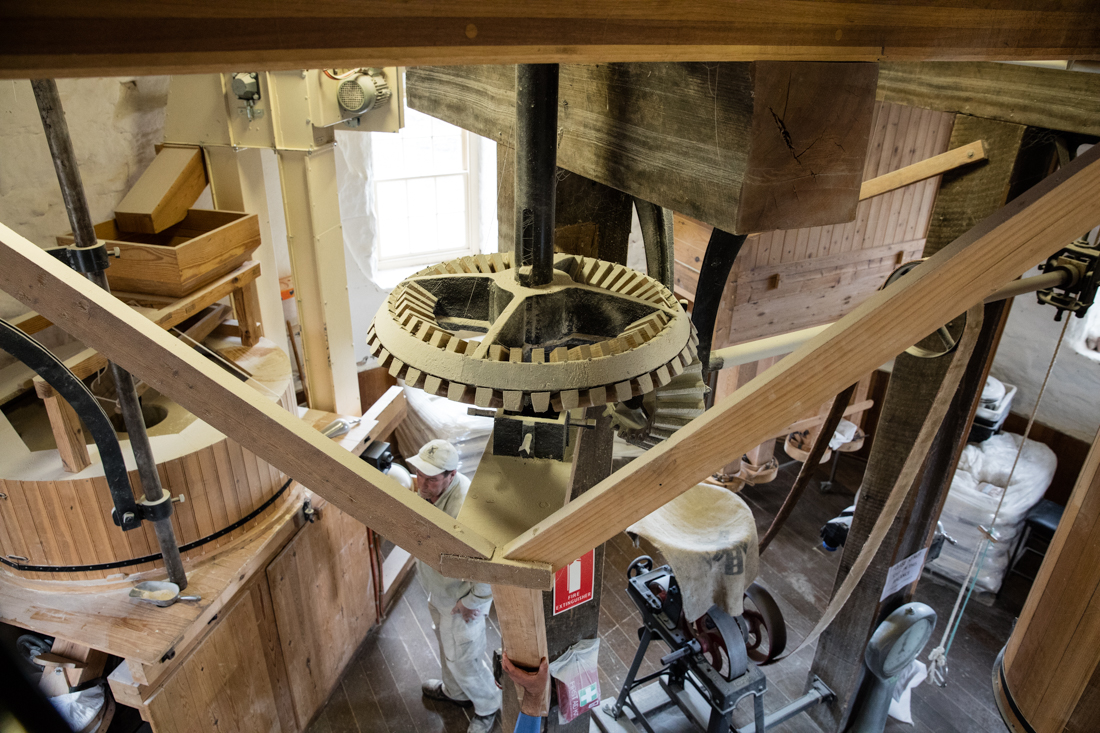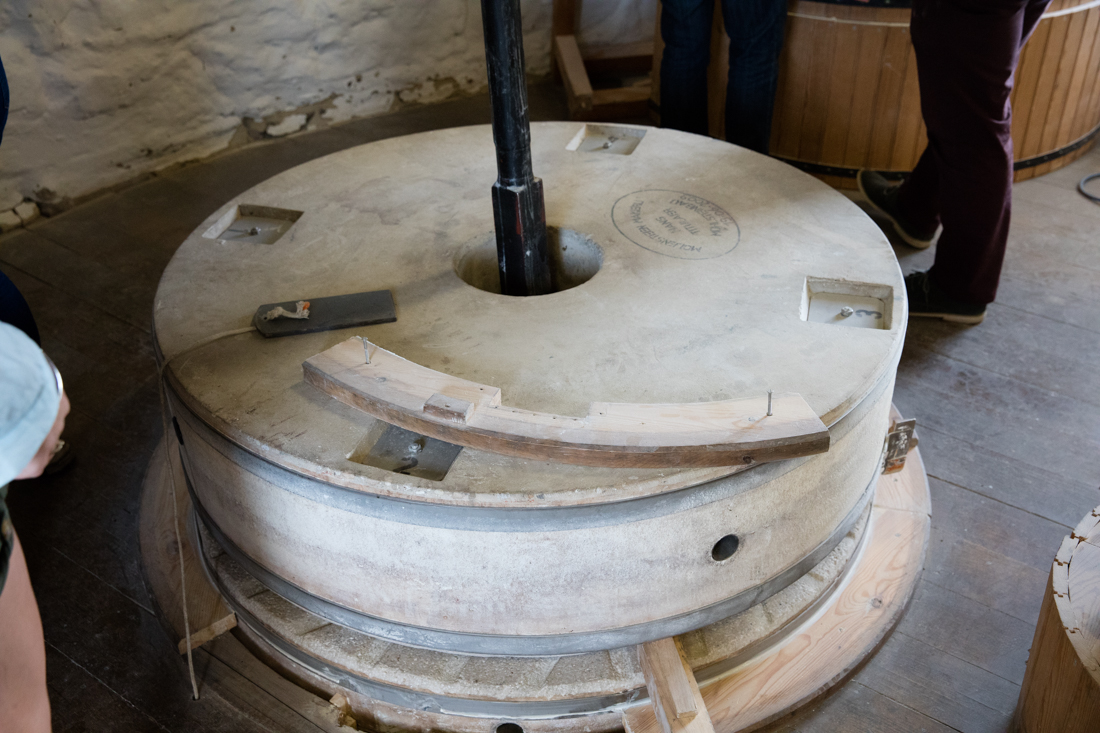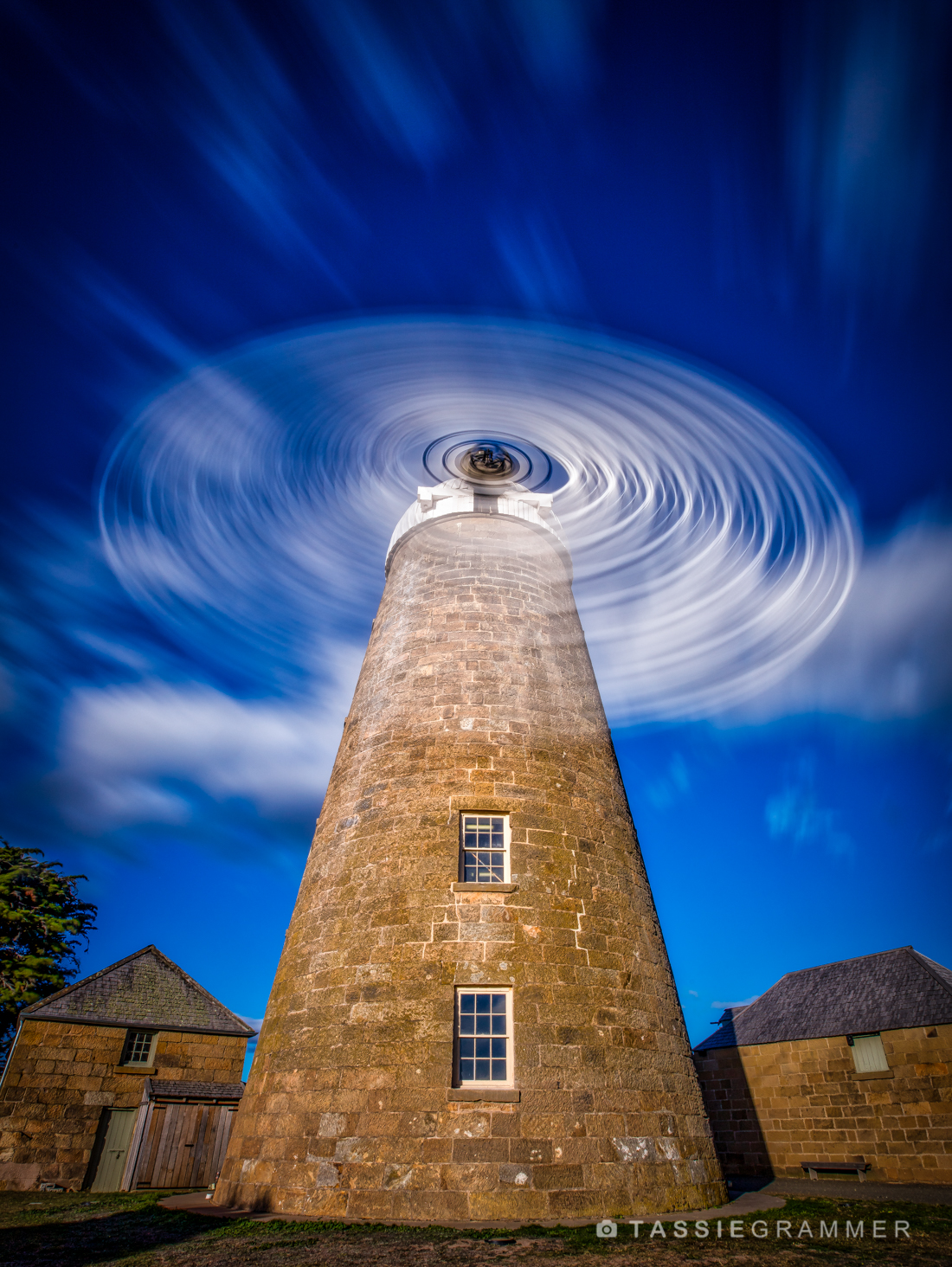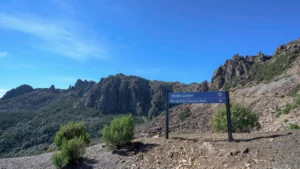If you’ve ever driven along the Midland Highway throughout the Hobart & Beyond region of Tasmania, you would have seen the striking presence of the Callington Mill as a familiar landscape along the Heritage Highway. Recently myself (@tassiegrammer) and @tassieadventurer were invited along to take a tour to learn more about this great part of Tasmania’s history.
The beautiful 1837 built Georgian mill is the only working wind-powered mill in the Southern Hemisphere and is a structure that fits in perfectly with the lovely sandstone Georgian buildings of Oatlands’ convict era.
By participating in a guided tour of the mill recently, we got an insight into the workings of the mill and see what actually happens inside the tower.
With our stylish hair nets and hard hats, our tour group was led into the tower and given a safety briefing (climbing single file up and down narrow staircases revealed that the hats were not just for fashion).
We were lucky enough to take our cameras inside for the purpose of our tour, as cameras are not normally allowed inside the mill for safety reasons. Apparently, the slightest static electricity spark can cause the flour to burst into flames, so we felt extremely lucky to have been able to photograph the mill’s interior.
Our guide was fantastic – his jolly demeanour and cheeky jokes kept us all entertained, and his knowledge of the mill made for a very informative tour. Learning about the mill’s history, seeing exactly how the stones grind the flour and how the whole process fits together in a tall narrow tower is quite fascinating.
A word of warning: once you get a taste for the flavoursome organic stone ground flour made by the mill, you might be hooked. They make it the way flour used to be made – and it tastes pretty good!
For more information to help plan your own visit, visit Callington Mill.
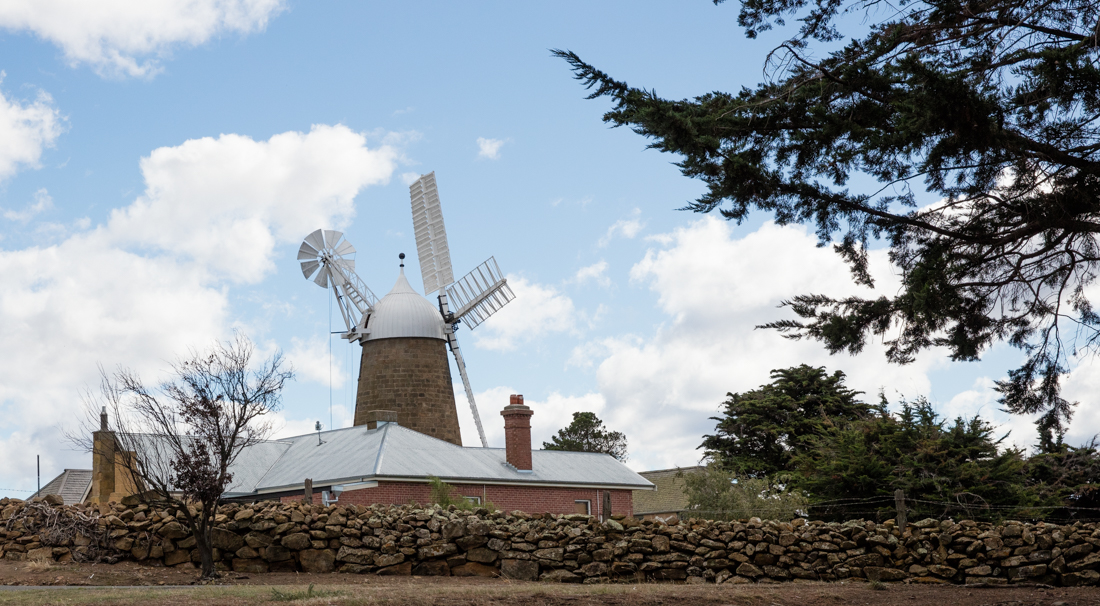
The Callington Mill is quite a site and has been a landmark along the Midlands Highway since 1837.
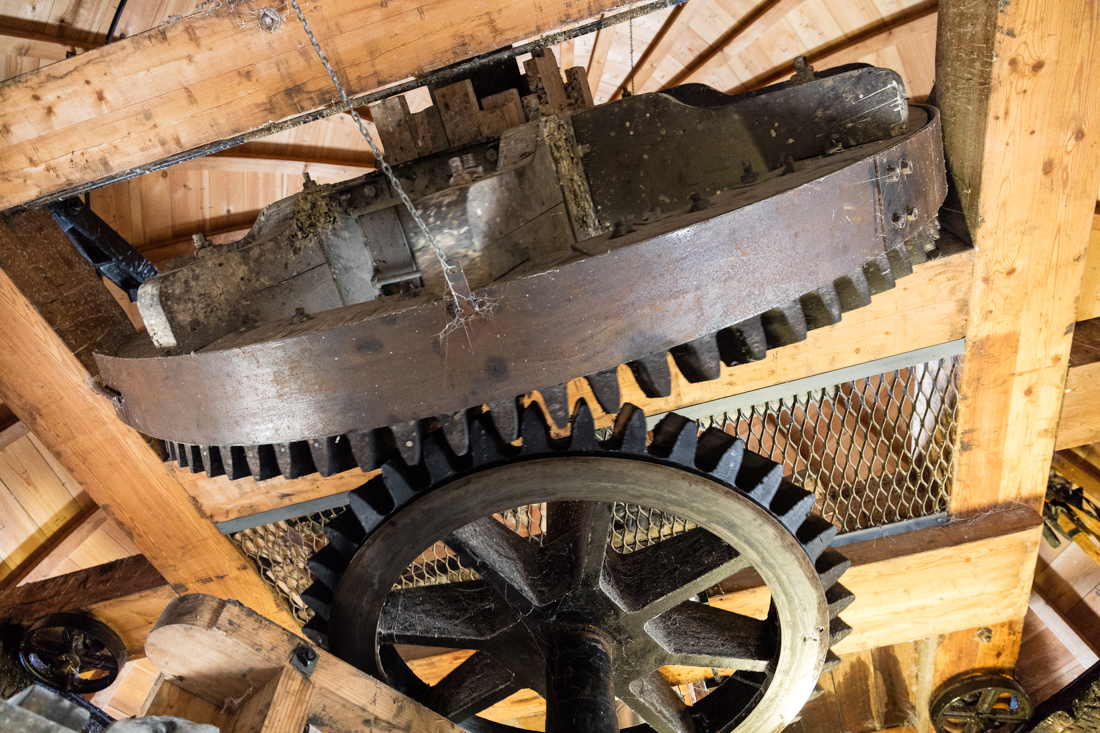
Inside the mill there are a lot of big cogs and gears to regulate the speed of how fast everything turns.
These weights are used to help balance the canvases as they turn and to ensure they do not wobble around in the wind.
There are no fancy electronics or motors in the Callington Mill. Flour is milled exactly how it was when the mill was first built in 1837.
The grindstones that actually crush the wheat into flour weigh nearly 2 tonnes.
The Callington Mill as you have never seen it before.
Header Image Credit: @darrenwrightphotos

